Teaching Historical Scene Painting
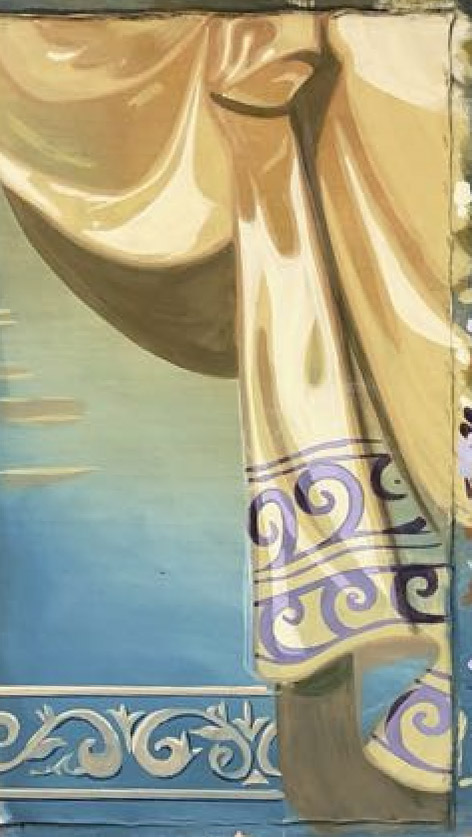 by Wendy Waszut-Barrett
by Wendy Waszut-Barrett
Last month, I was the instructor for Historical Scene Painting at Cobalt Studios. This specialty pro seminar was much more than simply replicating historical compositions and learning about dry pigment. The focus of the course was teaching scenic artists how to see color, value, and increase their overall speed.
Historical scene painting techniques are extremely efficient, and save time during the painting process. There is an economy of brush stroke and placement of color that allow massive drops to be created in a relatively short period of time. The students also painted each project with dry pigment. Dry pigment colors are quickly assembled on a scenic artist’s palette, then mixed and used from there. This not only saves precious time during the painting process, but also adds a variety to the final composition.
Cobalt Studio advertised, “This extremely hands-on seminar places it all in context. Your fingers will find  that fast touch while making 4-5 paintings. The take away is the confidence to apply these concepts and techniques to your work even if you don't generally use dry pigment.”
that fast touch while making 4-5 paintings. The take away is the confidence to apply these concepts and techniques to your work even if you don't generally use dry pigment.”
In addition to the safe handling and application of dry pigment, the class explored color selection, mixing and understanding of color. Many scenic artists work with a variety of painting products today, recognizing that each product line offers limited colors. As scenic artists, we also handle paints that range from watercolor to epoxy, and must be prepared for anything. Constant challenges are also thrown into the mix. Therefore, in our basic scenic art training, it helps to begin with the purest form of scenic paint – dry pigment.
The vibrant pure colors help artists see the possibility in all future projects. Dry pigment is the easiest paint media to identify and study the variety of hues available, especially when examining the warm and cool versions of each color. For example, there are warm and cool reds, as well as warm and cool blues – not all versions mix well. Understanding the subtle shifts of hue help scenic artists create more versatile compositions for the stage. It is the basic understanding of color, mixing and placement that provides endless possibilities to lighting designers, making the final composition more adaptable to a variety of lighting conditions on the stage. I believe that the historical approach to scenic art makes a painted composition “bullet-proof” for almost any lighting condition.
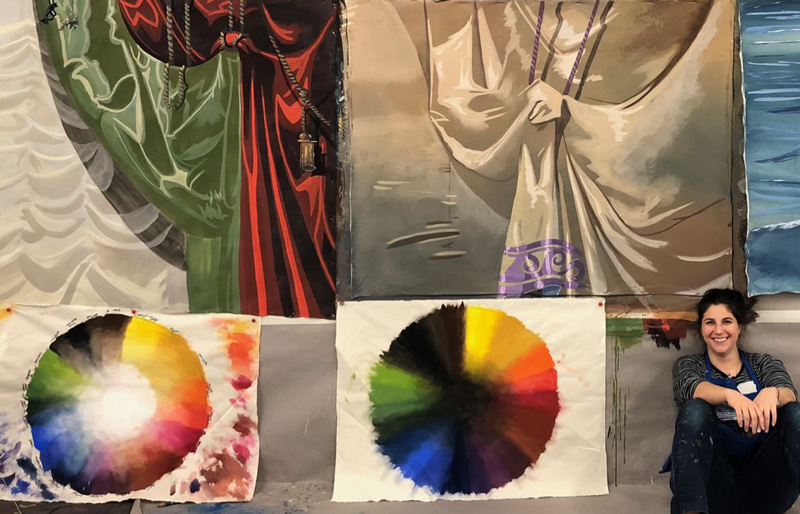
We started the week with a survey of historical scenic art from the late-nineteenth and early twentieth centuries, examining both the English tradition of glazing and the European use of opaque colors. We identified the color, contrast and value employed by historical scenic artists to make visually stimulating compositions in a short period of time. This provided students with a visual reference to move forward other own projects.
The subject matter for the class varied from seascapes and drapery to gold vessels and glass 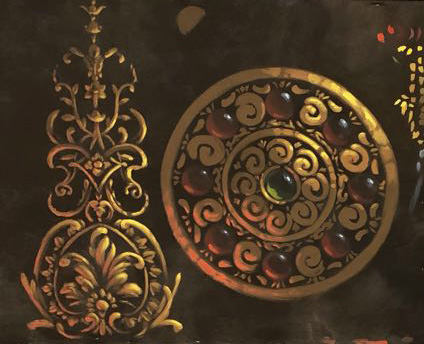 orbs. Each project used the same approach to working up a composition, beginning with an interesting base – a scumble of warm and cool colors – to a final flash of highlight. The students were encouraged to maintain color variety at every step.
orbs. Each project used the same approach to working up a composition, beginning with an interesting base – a scumble of warm and cool colors – to a final flash of highlight. The students were encouraged to maintain color variety at every step.
My goal for each class is that every student leaves with more options than with which they began. Historical scene painting techniques are not solely for painted replicas of the past. 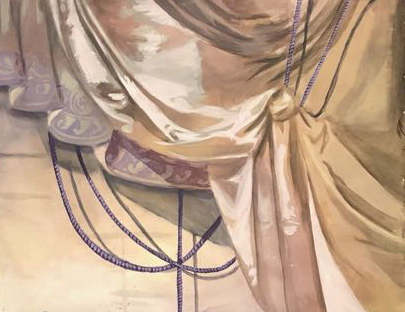 They are applicable to a variety of contemporary projects that include outdoor commercial exhibits, museum displays, theme parks, residential murals, and much more. These techniques make for a more successful outcome while saving time in the long run. [ ]
They are applicable to a variety of contemporary projects that include outdoor commercial exhibits, museum displays, theme parks, residential murals, and much more. These techniques make for a more successful outcome while saving time in the long run. [ ]
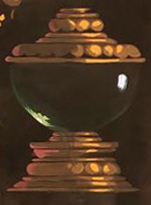 Waszut-Barrett is the president of Historic Stage Services, LLC. The company offers historical scenic painting classes and scenic art retreats at their studio in Cambridge, Minnesota. For more information on scenic art training, visit http://www.historicstageservices.com/index.html
Waszut-Barrett is the president of Historic Stage Services, LLC. The company offers historical scenic painting classes and scenic art retreats at their studio in Cambridge, Minnesota. For more information on scenic art training, visit http://www.historicstageservices.com/index.html
